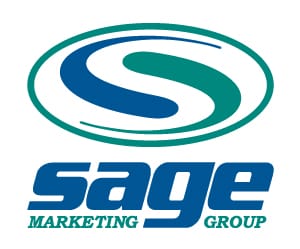You’ve heard it. You know it. Get your content strategy in check. You have to blog. In fact, you can’t afford to not create content regularly. Because without it, your competitors are going to dethrone you from the proverbial kingdoms of search, social, and content. Let’s avoid checkmate, shall we?
Any inbound marketing agency will tell you that your expertise is the most valuable commodity. And if it can be shared, the possibilities are boundless. But, before you cross the moat to conquer the market, you will want to gather around the round table and chart your buyer’s journey.
What kind of content do they want? When do they want it? In what medium should that content be delivered? With inbound marketing, you need to be ready to meet prospects along the marketing funnel top to bottom.
Right you are. But you wouldn’t send a bunch of knights into battle without their armor, swords, and horses, would you? The key is to write blogs often that can fit alongside your sales process. Because you’re not only meeting strangers in search engines and social networks. You’re attracting them to your website as visitors who you’re working to engage into leads and ultimately close and delight as customers.
Remember the old adage “create once, use many”? It maps nicely to the various calls-to-action (CTAs), content offers, and nurturing email workflows among other marketing automation communications of the sales process. But when you take a step back, I bet you could identify multiple blog topics that could support the content you later deliver to prospects in the middle or bottom of the marketing and sales funnel.
The mythical quest for the Holy Grail wasn’t completed overnight. B2B and B2C content marketing is the quest, not the outcome. It takes time to develop a content strategy that not only delivers the information your prospects want but also makes sense for your company.
As a business owner or marketing executive, ask yourself these six questions:
If you answered “No” to any of these, the Legendary Black Beast of Aaaaarrrrrrggghhh might devour you. But, if you address the No’s and invest in your team, additional resources, tools, and most importantly, time, you can set realistic expectations to execute a content strategy that is strengthened with each piece of content produced.
Don’t focus so much on your competition. It’s not all about conquering. Your competition may also have a content strategy in place that includes inbound marketing blogging. But, just because their content marketing is working for them doesn’t mean it’ll work for you. And vice versa. The content you produce may not drive the same impact from their audience.
I know what you’re thinking. “But if the Trojan horse worked for the Greeks…”
What makes you competitive and your content marketing, by extension, competitive is knowing your audience. Write for them. Provide answers to their burning questions. Offer solutions to their problems. Give them a reason to engage, stay engaged, and share. Let your content be there for them when they need it and where they need it. That aha moment that makes them say, “I have to work with these guys” can be a reality.
And only after that write for search engines. Because let’s not ignore the elephant in the room. Each piece of content you create becomes indexed by Google, Bing, Yahoo, and the like. Identifying keywords that translate throughout the blog headlines, sub headlines, body copy, and tags help to ensure you rank higher in search results. Cue royal wave.
Once your blog content is produced, posted, and is search engine-ready, amplify it and let your kingdom reign. Distribute your content to where your audience is the most likely to engage with it. Have an email list segment that would find the blog valuable? Send it over! Spread the wealth of knowledge to social media. And for an added boost, you may even consider pushing it through sponsored or paid media avenues.
Regardless of how you distribute your content, you’ll want to be sure to measure its impact:
The topics that lead to the most views and engagement and that drive the most leads are the ones you and your team will want to focus on as your inbound marketing content strategy evolves.
Talk inbound to me. I’m listening.

125 S. HOWES, #1C
FORT COLLINS, CO 80521
We love questions. get in touch
Copyright © 2024 Sage Marketing Group, Inc. All Rights Reserved. Website designed and built by us of course! (Sage Marketing Group, Inc.)
The unrelenting determination and effort to create sweet projects that make our clients so happy they want to cry.
| Cookie | Duration | Description |
|---|---|---|
| cookielawinfo-checkbox-analytics | 11 months | This cookie is set by GDPR Cookie Consent plugin. The cookie is used to store the user consent for the cookies in the category "Analytics". |
| cookielawinfo-checkbox-functional | 11 months | The cookie is set by GDPR cookie consent to record the user consent for the cookies in the category "Functional". |
| cookielawinfo-checkbox-necessary | 11 months | This cookie is set by GDPR Cookie Consent plugin. The cookies is used to store the user consent for the cookies in the category "Necessary". |
| cookielawinfo-checkbox-others | 11 months | This cookie is set by GDPR Cookie Consent plugin. The cookie is used to store the user consent for the cookies in the category "Other. |
| cookielawinfo-checkbox-performance | 11 months | This cookie is set by GDPR Cookie Consent plugin. The cookie is used to store the user consent for the cookies in the category "Performance". |
| viewed_cookie_policy | 11 months | The cookie is set by the GDPR Cookie Consent plugin and is used to store whether or not user has consented to the use of cookies. It does not store any personal data. |